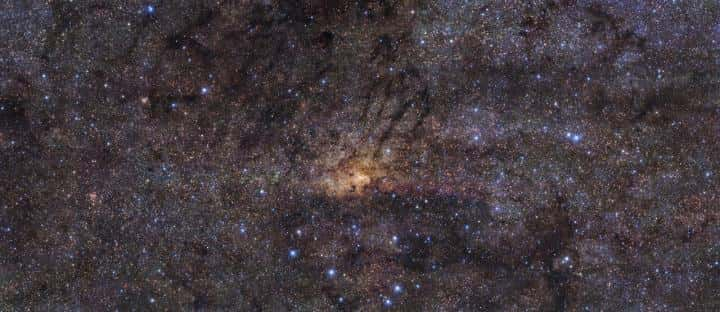The central part of the Milky Way witnessed an intense burst of star formation around billion years ago

Nearly one billion years ago, the galactic center of the Milky Way witnessed a dramatic event. That period saw stars entering the baby-boom phase, resulting in the birth of massive stars in a very short period, according to two new studies.
These conditions in the galactic center mirrored the ones that are typical of starburst galaxies, where stars are born at furious rates, with some churning out thousands of new stars each year. In contrast, one or two stars are formed currently in the Milky Way every year, the research team explains.
Further, the star formation in the region was not continuous, contrary to what had been accepted so far. "Our unprecedented survey of a large part of the Galactic center has given us detailed insights into the formation process of stars in this region of the Milky Way," says Rainer Schödel from the Institute of Astrophysics of Andalusia in Granada, Spain, one of the authors of the study.
Because the galactic center has our galaxy’s most prolific star forming environment, studying star formation in this region will inform scientists about the history of the Milky Way, co-author Francisco Nogueras-Lara, told MEA WorldWide (MEAWW).
But the galactic center is a mysterious region. Hidden in a cloud of dust and gas, studying this region has been challenging for scientists trying to uncover its secrets. So far, using powerful telescopes, scientists know that the region plays host to a range of exotic objects, from a supermassive black hole to mysterious and massive stars.

Using ESO's Very Large Telescope (VLT), scientists aimed to document the history of star birth. The telescope, which sits in the Chilean Atacama Desert about 25,000 to 28,000 light-years away from the galactic center, could see past the intervening dust and gas through its infrared eyes, revealing a detailed image of the galactic center.
The image painted a clear picture of the earliest years of the galactic center, which are spread across two time periods. Between eight and 13.5 billion years ago, most of these stars formed very early. Following this, the team says, the period witnessed a lull for about six billion years, during which very few stars were born. Bringing an end to this was an intense burst of star formation around one billion years ago, lasting for over a period of less than 100 million years.
These fairly recent bursts created several massive stars. "A great number of these stars are formed within a relatively short time period," Schödel told MEAWW.
"This event took place in a short time scale -- in less than 100 million years -- and provoked the explosion of more than a hundred thousand supernovae," Nogueras-Lara told MEAWW.
The period also saw several supernovae explosions because massive stars die sooner in violent explosions than their lower-mass counterparts, explains the team. "This must have given rise to more than 100,000 supernova explosions. This probably is one of the most energetic events in the lifetime of the galaxy," explains Schödel.
In the future, the team will study how the stars move, which would allow them to clearly record when each of the different parts of the galactic center were formed, adds Schödel.
You can find the studies here and here.